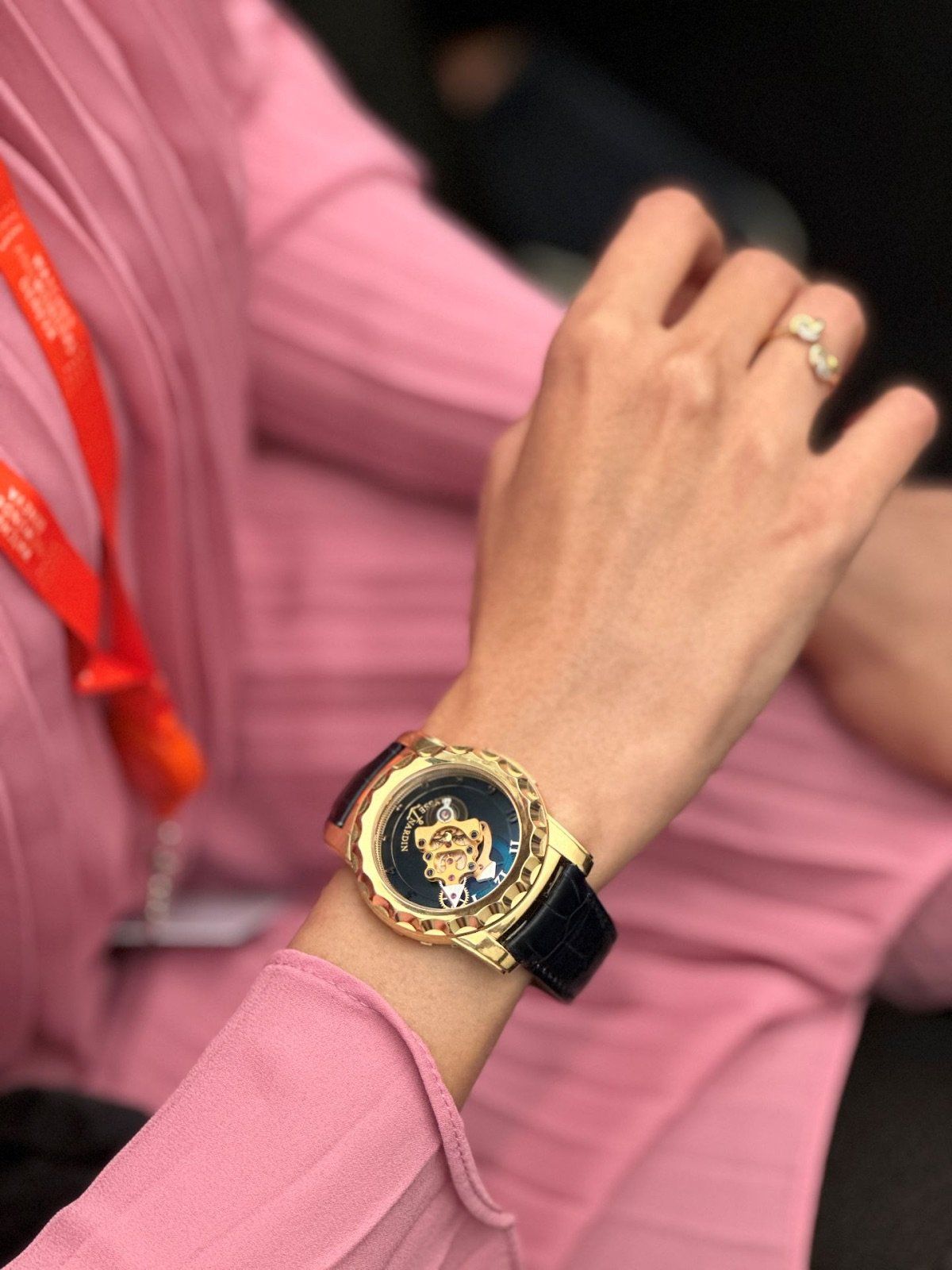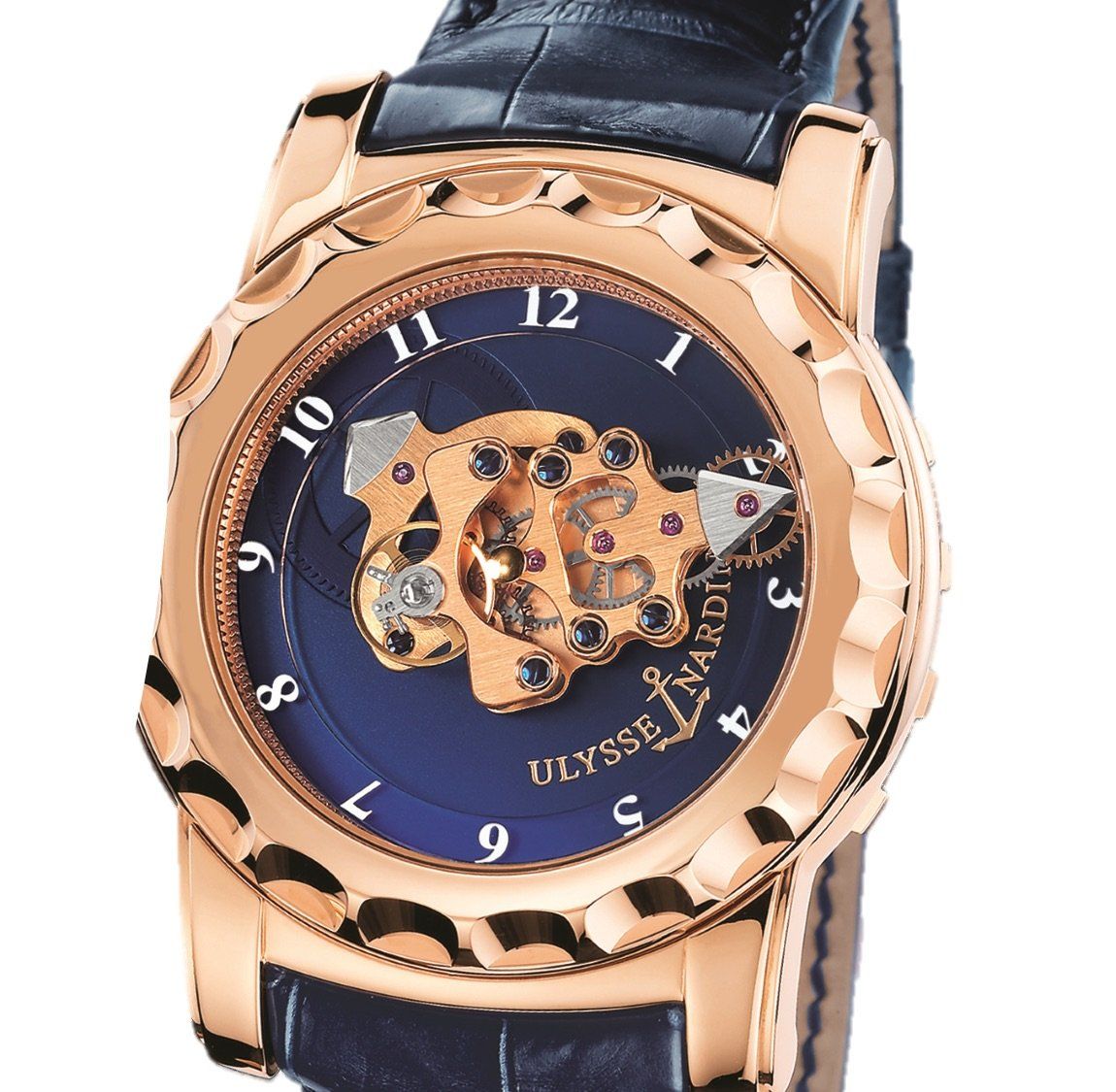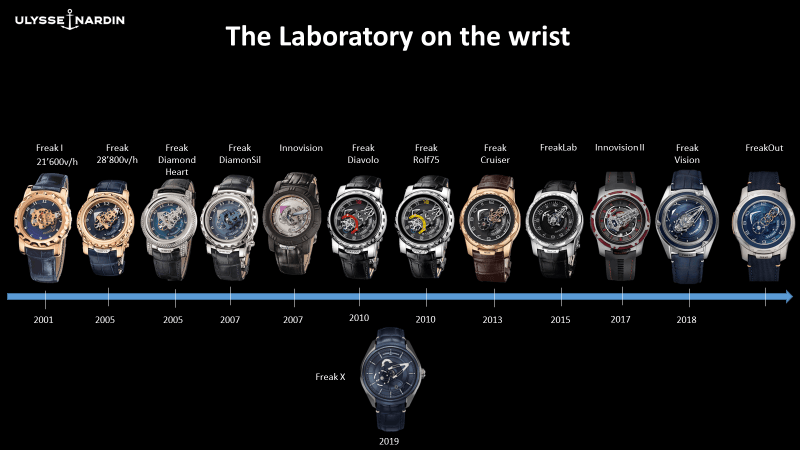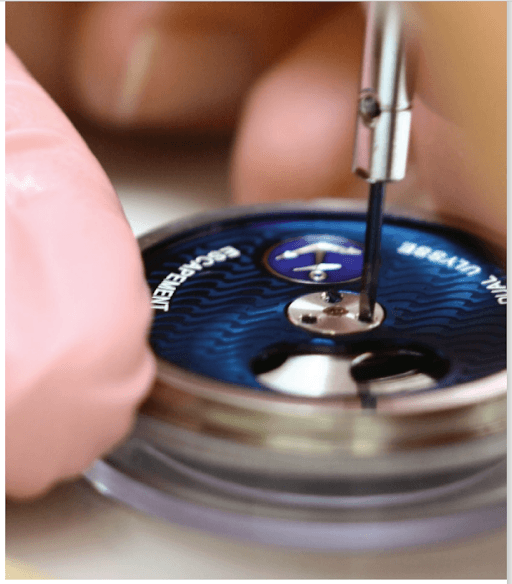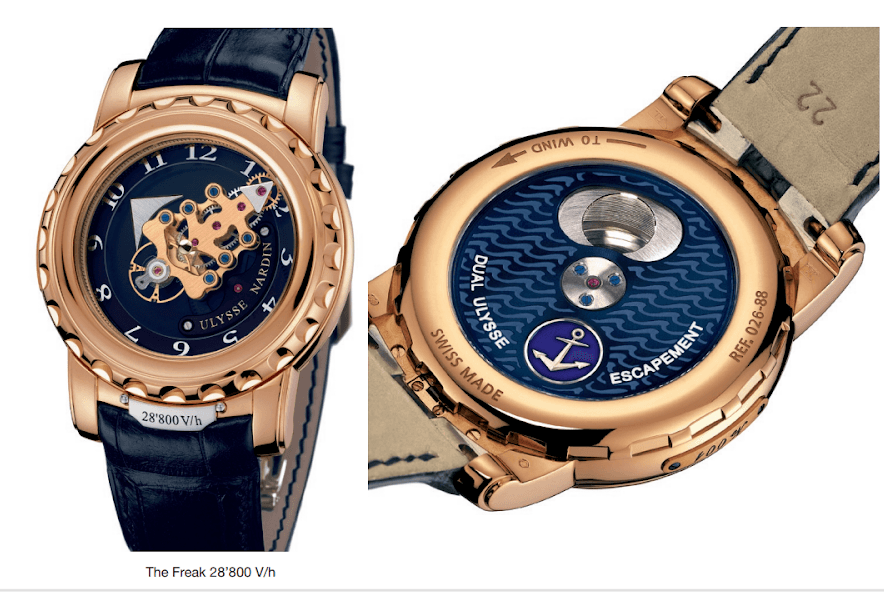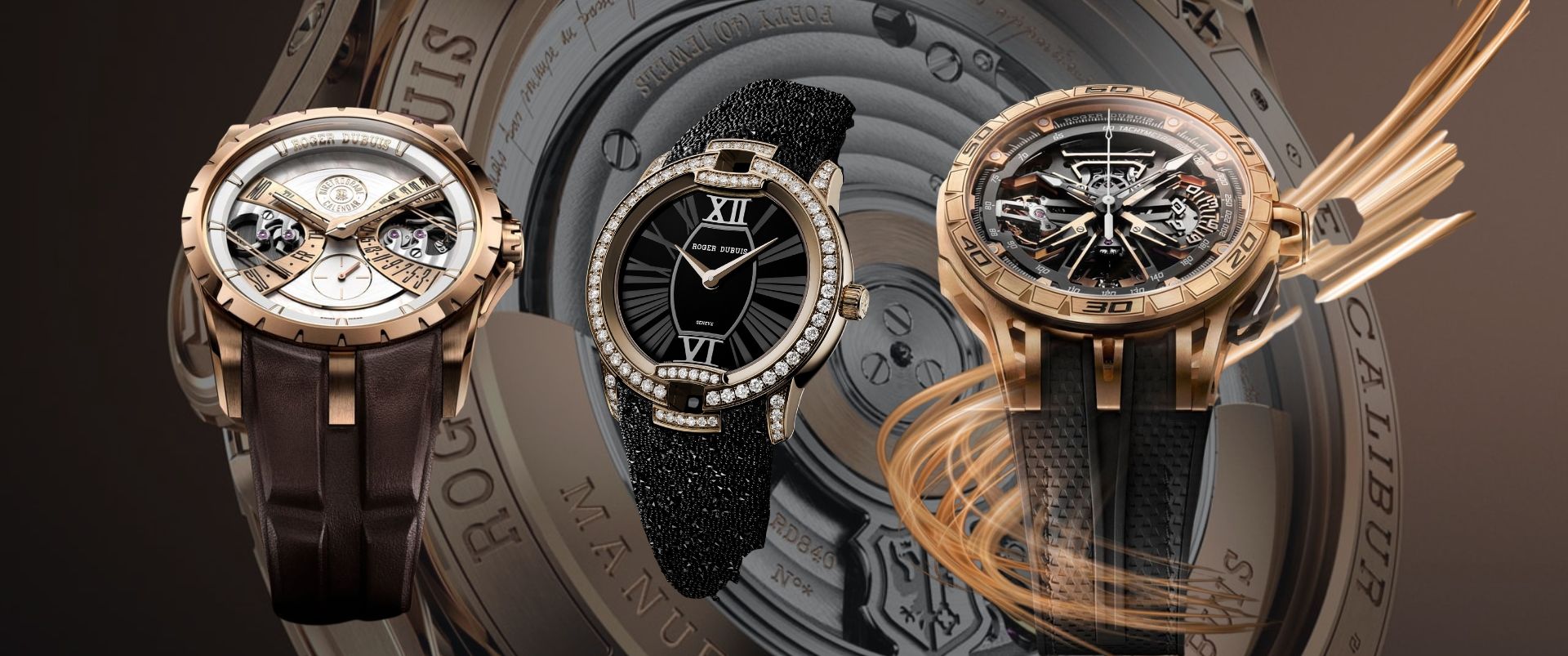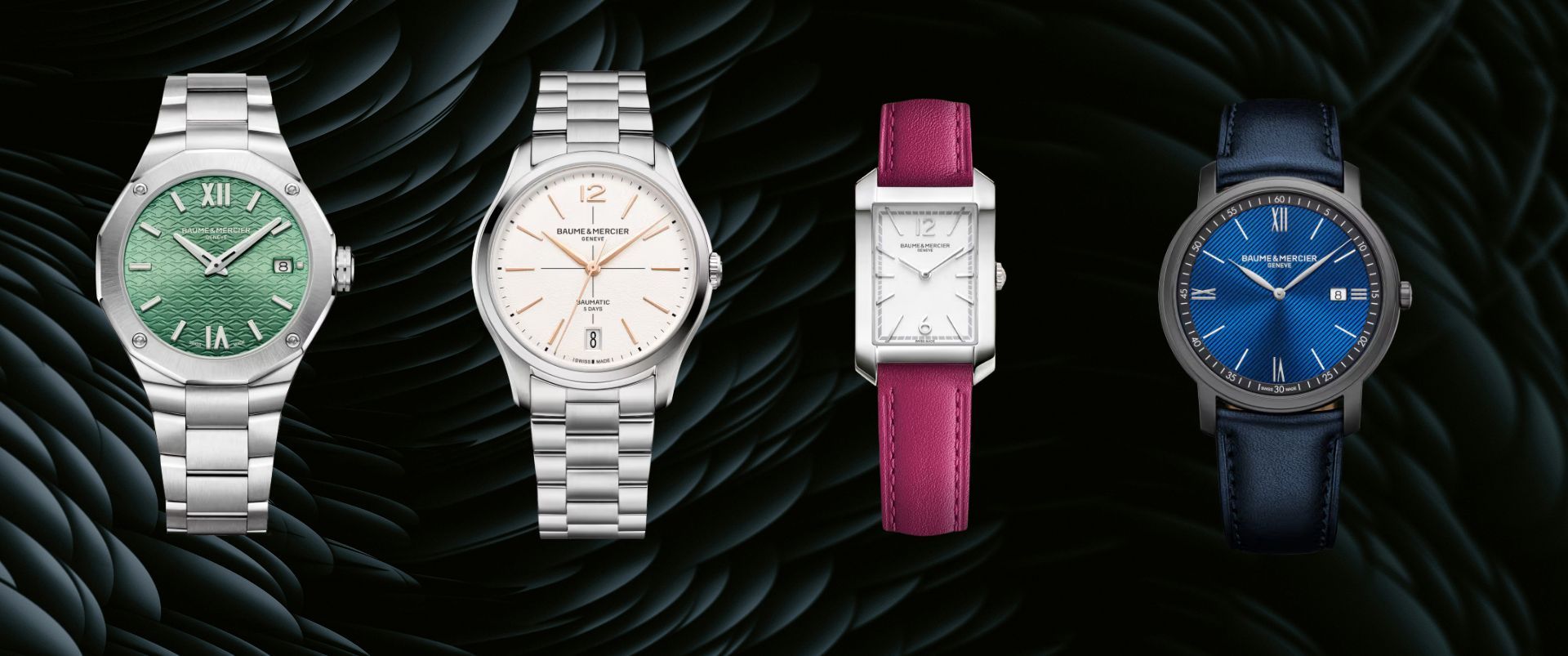But Look Inside The Escapement!: How The Ulysse Nardin’s Freak Wrote A Poetry On Your Wrist
Art's purpose isn't to copy the world around it but to understand it and share it. The artist gives his view of the world through his voice, which is shaped by the way his left and right brains work together. Art is also important to culture because it breaks new ground. The art world was rocked in 1874 by the first Impressionist show, which included works by Camille Pissarro. This new style of painting broke rules and gave art a new meaning, one in which creative expression was more important than what it looked like in real life. In this way, Pissarro went beyond reality.
After more than a century, with the help of a special wristwatch, Rolf W. Schnyder, Pierre Gygax, and Ludwig Oechslin of Ulysse Nardin would do something just as risky that started a fire that changed the face of modern horology for good. What is this watch called? The Freak.
When did the project start in real-time?
Ludwig Oechslin remembers the fateful day when Rolf Schnyder called him and asked him to look at a difficult carousel tourbillon project. He had no idea that the work they were about to do together would change the way watches are made for good.
Ludwig Oechslin explains: “Rolf showed me the plans for this watch where the movement was inside the center of the mainspring. The mainspring caused the entire movement to rotate, but the problem with this design was that, with the mainspring occupying the space between the movement and the case, there was not enough power to drive the watch.”
In all honesty, the situation was precarious. Ulysse Nardin had already put money into this project, and now it seemed like it couldn't be done. But as Ludwig Oechslin looked into it, he started to get an idea.
Says Pierre Gygax: “What makes Ludwig very special is his ability to see very simple, pure solutions to complex problems. In this situation, what he came up with took us in a totally new direction.”
History of The Freak
Ulysse Nardin’s Freak was the brainchild of watchmaker Ludwig Oechslin, who joined the company as a consultant in 1983. Oechslin's expertise in the field of astronomical complications and his passion for innovation inspired him to create a watch that would challenge the conventions of traditional watchmaking.
The Freak was introduced with visual panache at a fete with a “Basel Carnival” theme three weeks before the 2001 Basel watch fair. During this event a troupe of drummers and piccolo players all wore masks depicting Dr. Ludwig Oechslin and were conducted by a particularly authoritative figure wearing both a mask of Rolf Schnyder as well as a mask of Ludwig Oechslin.

At first glance, The Freak appears to be a watch without hands. Instead of a traditional dial, the timepiece features a rotating central bridge that serves as the minute hand. The bridge rotates once per hour, indicating the time on a chapter ring located on the outer edge of the case. To read the time, the wearer simply reads the position of the bridge relative to the chapter ring.
The Freak was also the first watch to incorporate a silicon escapement, a revolutionary development that provided superior accuracy and reduced the need for lubrication. The watch also featured a tourbillon that rotated on its own axis every 60 minutes, ensuring consistent timekeeping no matter the orientation of the watch.
Disruptions created by The Freak
The Ulysse Nardin The Freak represented a major disruption in the world of watchmaking. The watch's unconventional design and use of cutting-edge materials challenged traditional notions of watch design and function, and it quickly became a symbol of the brand's commitment to innovation.
Ludwig had been trying to convince Rolf Schnyder to use this escapement for several years. Schnyder recalls, “I remember the first time he came into my office looking very proud. He placed this clock on my desk. I asked him: ‘Yes, what can I do for you?’ and he said, ‘But look! Look inside at the escapement.’ It was very impressive, but the escapement is the one part of the watch with which we’ve never had a problem. We’ve never had any watch come back for service because of the anchor escapement. Also, in a normal wristwatch, you can’t really see the escapement. So I decided not to use it at the time. He looked really depressed after this. It was Pierre (Gygax) who became really excited and began to experiment with different materials for the escape wheels so it could become implemented in a wristwatch.”
The use of silicon in the escapement was particularly groundbreaking, as it represented a major departure from traditional materials such as steel and brass. Silicon is lighter, harder, and more resistant to magnetism than traditional materials, providing superior accuracy and reducing the need for lubrication. The use of silicon in watchmaking has since become more common, with many high-end brands incorporating the material into their timepieces.
The tourbillon was another disruptive element of Ulysse Nardin's Freak. While tourbillons had been around since the 18th century, The Freak's tourbillon was the first to rotate on its own axis every 60 minutes. This design ensured that the tourbillon was always in a vertical position, improving the accuracy of the watch no matter its orientation.
Says Rolf Schnyder: “The beauty of this idea was the purity of its design. There is a poetic economy to a watch that doesn’t need hands because the movement gives you the indication of time.” While all watches tell time thanks to their movements, only in the Freak does the movement itself tell you time!
How Does It Work?
One of the most impressive things about the Freak is how its design is simple, logical, and mechanically pure. The Japanese art of haiku uses just a few words to show how someone feels. Also, the Freak watch, which shows the time with parts of its movement, is a great example of minimalist thinking at its best.
The Freak has a 7-day power reserve and is built like a carousel tourbillon. A traditional tourbillon is different from a carousel tourbillon in that the escapement of the classic tourbillon rotates around the central axis of the balance wheel once every minute, while the balance wheel in a carousel tourbillon is not in line with the central axis. Think back to the Merry-Go-Rounds you rode as a kid. Now, take out the wooden horse at the edge of the ride and replace it with a watch's balance wheel. You now have a carousel tourbillon, in which the mechanism controls the ride rides away from the central axis of rotation of the platform.
The Freak's move is made up of three layers, like a cake. The watch's big mainspring makes up the bottom layer. When you turn the Freak over and look at the mainspring, you'll feel your heart beat faster.
The Freak has the biggest mainspring on the market right now. This huge coil goes all the way around the watch case and provides enough power to keep the whole watch movement turning for seven days. To feed this goliath power, you turn the case back counterclockwise, and the rotating arms attached to the case back pick up a pinion inside the mainspring barrel. This powerful power supply only needs 14 turns of the bezel to be fully charged.
When your spring is fully wound, its coils will be tightly packed in the middle of the barrel, like a cobra getting ready to strike.
The Art of Watchmaking
The Freak serves as a constant reminder that it is originality, not tradition, that gives any timepiece its value, even as the Swiss watch industry emerges from adversity and sails into what appears to be a bright limitless future. The Freak is a symbol of innovation and the vital role it plays in preserving the future of mechanical watchmaking in an industry that was rebuilt by courageous pioneers like Rolf Schnyder with the now-realized dream of a mechanical watch renaissance.
A mechanical wristwatch, like the Freak, should be a manifestation of human creativity. This is significant because, ever since the dawn of civilization, people have been making tools to help them keep track of time.
He only cared about one thing from the start. He was on the trail of the elusive accuracy god. He overcame the use of shadow-based sundials and horizon-based astronomical instruments like astrolabes to determine the passage of time. The quest for precision, however, took a giant leap forward when Man built the first engine, a mechanical watch. He started capturing and controlling immortality itself. With the split-second chronograph, he could figure out lap times, and with the perpetual calendar, he could always know the exact date, month, year, and even the exact location of the moon in the sky.
While The Freak's unconventional design and use of materials were certainly disruptive, they were also a testament to the artistry and craftsmanship that goes into watchmaking. The watch's complex mechanical movement, which consists of more than 200 individual parts, showcases the incredible skill and precision required to create a high-end timepiece.
The watch's central bridge, which serves as the minute hand, is particularly impressive. The bridge is shaped like a propeller, and its rotation around the dial is reminiscent of the movement of a ship's propeller through the water. This design is a nod to Ulysse Nardin's maritime heritage, as the brand has long been associated with precision timekeeping for naval navigation.
“I think the Freak is the first watch that was made outside of the tradition of watchmaking in the last 100 years,” says Ludwig Oechslin. “It was the first watch to open up the invisible world of the movement to the owner. It is something totally different and I have to say I admire Ulysse Nardin for taking a chance with it because it takes real courage to be really innovative. It also liberated the industry; it gave us freedom and gave birth to this idea of concept watches that are as much interpretive art as they are time-telling machines. I doubt very much that there would have been any other concept watches were it not for the Freak.”
You could say that the Freak was the first spark of creativity that led to the modern world of watchmaking where time is shown in three dimensions. But the Freak is still different from these other modernist timepieces. While these other watches have added extra features to show the time in creative ways, the Freak strips time telling down to its most basic, poetic form. This is why it has its own chapter in the history of horology.
No articles found

